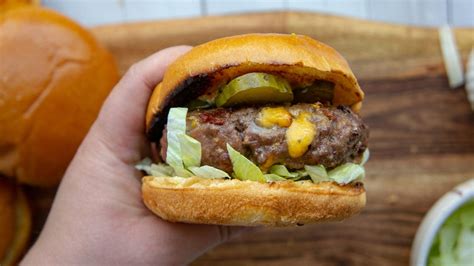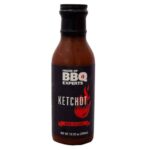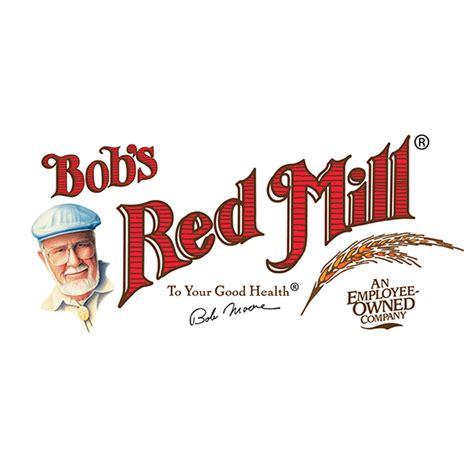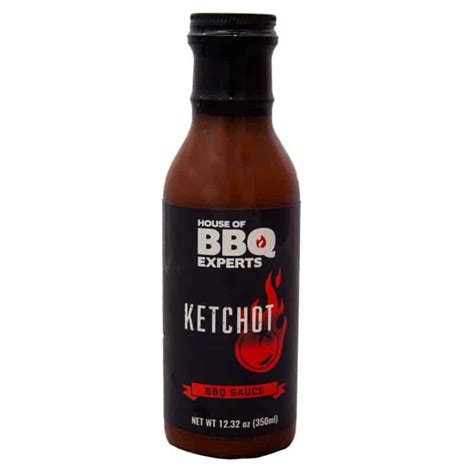
Bobby Flay has ignited a culinary debate, asserting that one particular cheese has no place on a burger: provolone. The celebrity chef and restaurateur contends that the cheese’s flavor profile clashes with the other ingredients typically found in the popular sandwich.
Celebrity chef Bobby Flay has stirred up a gastronomic hornet’s nest, declaring a firm stance against the use of provolone cheese on burgers. In a recent interview, Flay expressed his strong aversion to the pairing, arguing that the cheese’s inherent flavor profile simply doesn’t complement the other components of a well-crafted burger. This declaration has resonated across the culinary world, sparking conversations among chefs, food critics, and burger enthusiasts alike.
“Provolone just doesn’t belong on a burger,” Flay stated emphatically. “It overpowers the beef and the other flavors you’re trying to achieve. It’s just not the right cheese for the job.”
Flay’s critique isn’t merely a matter of personal preference; he argues that provolone’s distinct taste and texture disrupt the delicate balance of flavors that define a great burger. He emphasizes the importance of selecting cheeses that enhance, rather than overshadow, the primary ingredient – the beef patty.
The chef, known for his expertise in grilling and American cuisine, suggests that there are numerous other cheeses better suited for burgers, such as cheddar, American, and even Monterey Jack, all of which, in his opinion, harmonize more effectively with the beef and other toppings.
The Case Against Provolone: A Flavor Imbalance
Flay’s argument centers on the idea that provolone, with its varying degrees of sharpness and often tangy flavor, can easily dominate the palate, masking the nuances of the beef and other carefully chosen additions. A well-constructed burger, according to Flay, is a symphony of flavors where each ingredient plays a supporting role, enhancing the overall experience without overpowering the others.
Provolone cheese originates from Southern Italy and comes in several forms, ranging from mild to sharp. The sharper versions, in particular, possess a pronounced tang that can clash with the savory richness of the beef and the acidity of common toppings like tomatoes and pickles. This clash, Flay contends, results in a less harmonious and ultimately less satisfying burger experience.
Alternative Cheeses: A Harmonious Blend
In contrast to provolone, Flay advocates for cheeses that complement the beef’s flavor profile. Cheddar, for example, offers a nutty and slightly tangy flavor that pairs well with the richness of the beef, while American cheese melts beautifully and provides a creamy texture that enhances the overall mouthfeel. Monterey Jack, with its mild and buttery flavor, adds a subtle richness without overpowering the other ingredients.
These cheeses, according to Flay, strike a better balance, allowing the beef to remain the star of the show while contributing their own unique characteristics to the overall flavor profile. The key, he argues, is to select a cheese that enhances, rather than detracts from, the overall burger experience.
The Great Burger Debate: A Culinary Battlefield
Flay’s stance on provolone is just the latest salvo in the ongoing burger debate, a culinary battlefield where chefs and food enthusiasts passionately defend their preferred toppings, cooking methods, and flavor combinations. The burger, a quintessential American staple, has evolved over the years, with countless variations and interpretations emerging across the country.
From classic cheeseburgers with simple toppings to gourmet creations with exotic ingredients, the burger has become a canvas for culinary creativity. However, this freedom of expression has also led to heated debates over what constitutes a “true” burger and what ingredients are considered sacrilegious.
Flay’s declaration against provolone is likely to fuel this debate, prompting burger aficionados to re-evaluate their own preferences and defend their favorite cheese pairings. While some may agree with his assessment, others may argue that provolone adds a unique and welcome dimension to the burger experience.
The Art of Burger Construction: A Delicate Balance
Ultimately, the perfect burger is a matter of personal taste, and there is no single “right” way to build one. However, Flay’s critique of provolone highlights the importance of considering the interplay of flavors and textures when constructing a burger. A well-crafted burger is more than just a collection of ingredients; it’s a carefully balanced composition where each element contributes to the overall harmony.
Whether you agree with Flay’s assessment of provolone or not, his comments serve as a reminder that the art of burger construction is a delicate balance, requiring careful consideration of each ingredient and its impact on the final product.
Impact on the Culinary World
Bobby Flay’s declaration is expected to influence trends and discussions within the culinary industry. His opinion, given his status and influence, often leads to increased awareness and experimentation among both professional chefs and home cooks. It could prompt restaurants to reconsider their burger offerings and encourage individuals to explore alternative cheese options. The media attention generated by this statement also helps to keep the culinary conversation dynamic and innovative.
The Science Behind Cheese and Burgers
The chemistry of cheese and how it interacts with other ingredients, especially meat, is a complex and interesting area. Different cheeses have varying levels of fats, proteins, and moisture, which affect their melting properties, textures, and flavors. For instance, cheeses with high moisture content, like mozzarella, melt very smoothly but may not have strong flavors. Cheeses like cheddar have more complex flavor profiles that change as they melt. Provolone, depending on its age, can have a sharper, tangier flavor, which might not complement the umami-rich taste of beef as well as other cheeses. Understanding these properties helps chefs and cooks make informed decisions about pairing cheeses with burgers.
Provolone’s Defense: A Matter of Personal Taste
Despite Flay’s strong stance, many burger enthusiasts and chefs would argue that provolone does have a place on certain types of burgers. Its slightly sharp, nutty flavor can complement specific toppings and sauces, offering a different experience than the more traditional cheddar or American cheese. For those who enjoy a bolder, more complex flavor profile, provolone can be a delicious addition. Ultimately, the choice of cheese is a matter of personal preference, and there’s no definitive answer as to which cheese is “best” for a burger.
The Evolution of the Burger
The burger has come a long way from its humble beginnings as a simple meat patty served on a bun. Over the years, it has evolved into a culinary canvas, with chefs and home cooks experimenting with different toppings, sauces, and cheeses to create unique and innovative flavor combinations. This evolution has led to a wide range of burger styles, from classic American cheeseburgers to gourmet creations featuring exotic ingredients.
The burger’s versatility is one of the reasons for its enduring popularity. It can be customized to suit individual tastes and preferences, making it a truly democratic food. Whether you prefer a simple burger with just cheese and ketchup or a more elaborate creation with multiple toppings and sauces, there’s a burger out there for everyone.
The Psychology of Food Preferences
Our food preferences are shaped by a complex interplay of factors, including genetics, culture, and personal experiences. From a young age, we develop associations with certain flavors and textures, which can influence our food choices for the rest of our lives. Cultural norms and traditions also play a significant role in shaping our food preferences, as do our personal experiences with food, such as memorable meals or traumatic food-related incidents.
Understanding the psychology of food preferences can help us appreciate the diversity of culinary traditions and the individual tastes that make each of us unique. It can also help us become more open-minded and adventurous eaters, willing to try new foods and flavors.
The Burger as a Symbol of American Cuisine
The burger has become an iconic symbol of American cuisine, representing the country’s love of fast food, casual dining, and culinary innovation. From humble roadside diners to upscale restaurants, the burger is a staple of the American diet, enjoyed by people of all ages and backgrounds. Its popularity has spread around the world, with burger joints popping up in cities across the globe.
The burger’s enduring appeal lies in its simplicity, versatility, and affordability. It’s a food that can be enjoyed on its own or customized to suit individual tastes and preferences. Whether you’re looking for a quick and easy meal or a more elaborate culinary experience, the burger is always a satisfying choice.
The Future of the Burger
As culinary trends continue to evolve, the burger is likely to undergo further transformations. Chefs are constantly experimenting with new ingredients, cooking methods, and flavor combinations to create innovative and exciting burger creations. Plant-based burgers are becoming increasingly popular, offering a sustainable and healthy alternative to traditional beef burgers.
The future of the burger is bright, with endless possibilities for culinary innovation and experimentation. Whether you’re a traditionalist or an adventurous eater, there’s always something new and exciting to discover in the world of burgers.
The Role of Social Media in Culinary Debates
Social media platforms have become powerful tools for chefs and food enthusiasts to share their opinions, recipes, and culinary creations. They have also become a forum for lively debates about food-related topics, such as the best way to cook a steak or the proper way to make a pizza. These debates can be both informative and entertaining, providing insights into different culinary perspectives and sparking new ideas.
Social media has also made it easier for chefs to connect with their fans and followers, allowing them to share their culinary expertise and engage in conversations about food. This direct interaction can help chefs stay informed about consumer trends and preferences, allowing them to tailor their menus and offerings to meet the needs of their audience.
The Importance of Quality Ingredients
Whether you’re making a simple cheeseburger or a gourmet creation, the quality of the ingredients is essential. Using high-quality beef, fresh produce, and flavorful cheese can make a big difference in the overall taste and texture of the burger. It’s also important to use the right cooking techniques to ensure that the burger is cooked to perfection.
For example, using a cast-iron skillet or a grill can help create a nice sear on the outside of the burger, while cooking it to the proper internal temperature will ensure that it’s juicy and flavorful. Paying attention to these details can elevate your burger from ordinary to extraordinary.
The Influence of Regional Cuisine on Burger Styles
Regional cuisine plays a significant role in shaping burger styles across the country. Different regions have their own unique ingredients, cooking methods, and flavor preferences, which are reflected in the burgers they serve. For example, in the Southwest, burgers are often topped with green chiles and pepper jack cheese, while in the Midwest, they may be served with a fried egg and bacon.
Exploring the regional variations of the burger can be a fun and educational culinary adventure. It can also help you discover new flavor combinations and appreciate the diversity of American cuisine.
The Economics of the Burger Industry
The burger industry is a major economic force, generating billions of dollars in revenue each year. From fast-food chains to upscale restaurants, burgers are a staple of the American economy, providing jobs and contributing to local communities. The burger industry is also a major consumer of agricultural products, supporting farmers and ranchers across the country.
Understanding the economics of the burger industry can help us appreciate the importance of this iconic food in the American economy. It can also help us make informed choices about the burgers we eat, supporting businesses that are committed to using sustainable and ethical practices.
The Health Aspects of Eating Burgers
While burgers can be a delicious and satisfying meal, it’s important to be mindful of the health aspects of eating them. Burgers can be high in calories, fat, and sodium, especially if they’re topped with excessive amounts of cheese, sauce, and other high-calorie ingredients. However, burgers can also be a good source of protein, iron, and other essential nutrients.
To make burgers a healthier choice, consider using lean ground beef, whole-wheat buns, and plenty of fresh vegetables. You can also reduce the amount of cheese and sauce you use and opt for healthier toppings like avocado, grilled onions, and mushrooms. By making these simple changes, you can enjoy burgers as part of a healthy and balanced diet.
The Psychological Comfort of Burgers
Burgers often evoke feelings of nostalgia and comfort, reminding us of childhood memories and happy times. For many people, a burger is more than just a meal; it’s a symbol of Americana, a connection to our cultural heritage. The simple act of eating a burger can bring a sense of joy and satisfaction, providing a momentary escape from the stresses of everyday life.
The psychological comfort of burgers is one of the reasons for their enduring popularity. In a world that is constantly changing, the burger remains a familiar and reliable source of comfort and enjoyment.
Frequently Asked Questions (FAQ)
1. Why does Bobby Flay dislike provolone cheese on burgers?
Bobby Flay believes provolone cheese overpowers the other flavors in a burger, specifically the beef. He argues that its distinct taste and texture disrupt the balance of flavors, making it unsuitable for a well-constructed burger. According to Flay, other cheeses like cheddar, American, or Monterey Jack offer a better flavor harmony.
2. What cheeses does Bobby Flay recommend as alternatives to provolone on burgers?
Flay suggests using cheddar, American, or Monterey Jack cheese on burgers instead of provolone. He believes these cheeses complement the beef’s flavor without overpowering it. Cheddar offers a nutty tang, American melts well for a creamy texture, and Monterey Jack provides a mild, buttery flavor.
3. What is the origin of provolone cheese and what are its flavor characteristics?
Provolone cheese originates from Southern Italy. It comes in various forms, ranging from mild to sharp. The sharper versions have a pronounced tang that can clash with the savory richness of beef and the acidity of common burger toppings, according to Flay.
4. How has the burger evolved over the years in American cuisine?
The burger has evolved significantly from a simple meat patty on a bun. It has become a culinary canvas with countless variations, from classic cheeseburgers to gourmet creations with exotic ingredients. This evolution includes diverse toppings, sauces, and cheese combinations, leading to ongoing debates about the “true” burger.
5. How do personal food preferences and culture affect burger ingredient choices?
Food preferences are influenced by genetics, culture, and personal experiences. From a young age, associations with certain flavors and textures develop, affecting food choices. Cultural norms and traditions also play a role in shaping preferences. Personal experiences, like memorable meals, further influence individual tastes in burger ingredients.
![Bob’s Red Mill’s New [Product] Is a Family Favorite: Gone in Days!](https://infoduniaku.com/wp-content/uploads/2025/06/unnamed-file-279-150x150.jpg)








